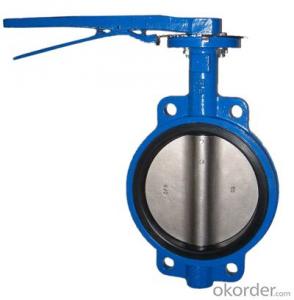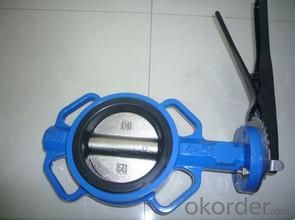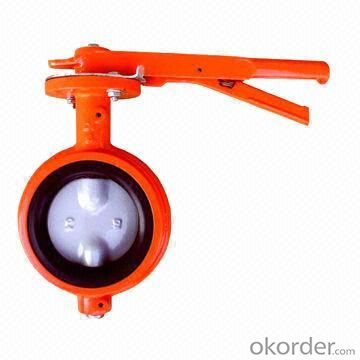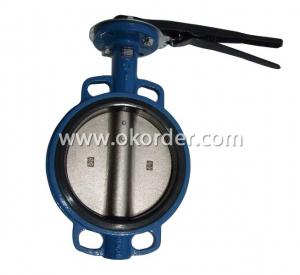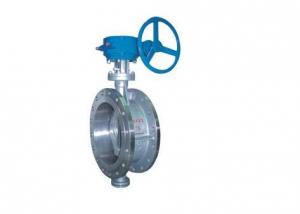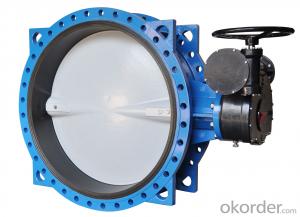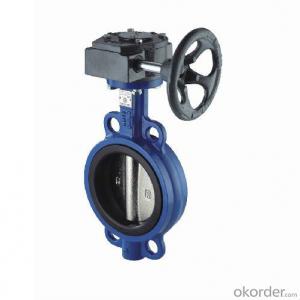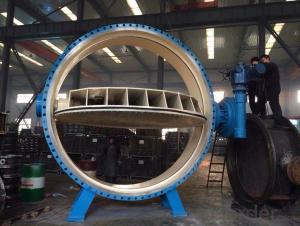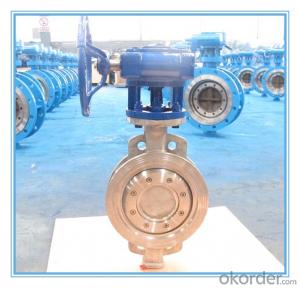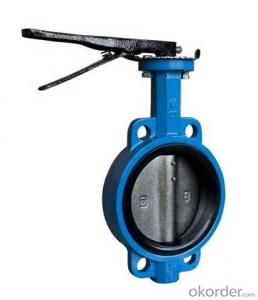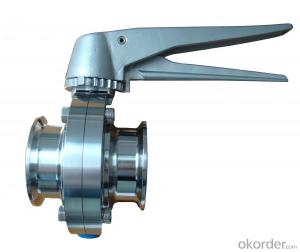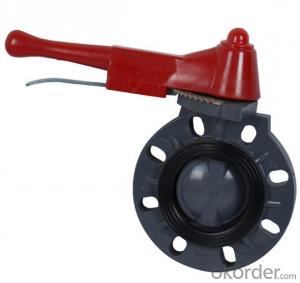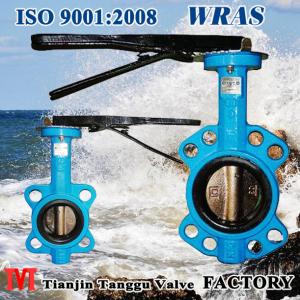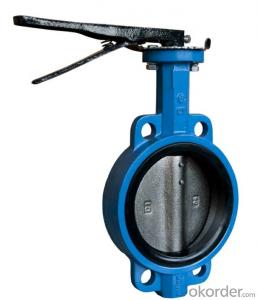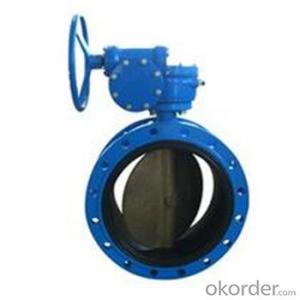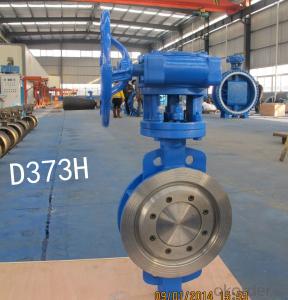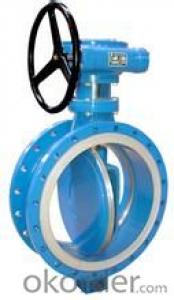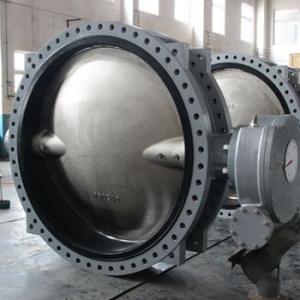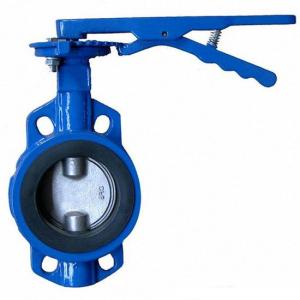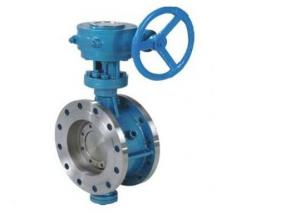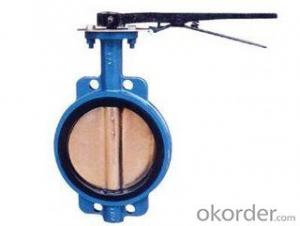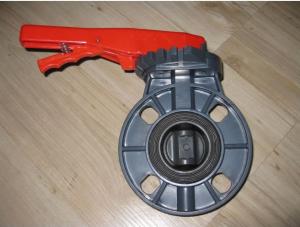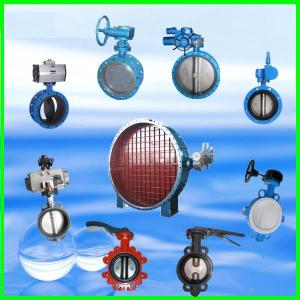Butterfly Valve Manual Wafer Vlave PN10-16
- Loading Port:
- China main port
- Payment Terms:
- TT OR LC
- Min Order Qty:
- 100 pc
- Supply Capability:
- 1000 pc/month
OKorder Service Pledge
OKorder Financial Service
You Might Also Like
1. Manual Wafer Butterfly Valve Description:
A butterfly valve is a valve which can be used for isolating or regulating flow. The closing mechanism takes the form of a disk. Operation is similar to that of a ball valve, which allows for quick shut off. Butterfly valves are generally favored because they are lower in cost to other valve designs as well as being lighter in weight, meaning less support is required. The disc is positioned in the center of the pipe, passing through the disc is a rod connected to an actuator on the outside of the valve. Rotating the actuator turns the disc either parallel or perpendicular to the flow. Unlike a ball valve, the disc is always present within the flow, therefore a pressure drop is always induced in the flow, regardless of valve position.
2.Main Features of the Manual Wafer Butterfly Valve
a)Cast hole. Flange connection meet ANSI 125/150# DIN PN10/16 BS4504 PN10/16 in the meanwhile.
b)Soft seat. Replaceable.Increase of service life.
c)Double half shaft without pin.
d) Square and short neck. Easy to stick scutcheon and cost saving.
3. Manual Wafer Butterfly Valve Images:
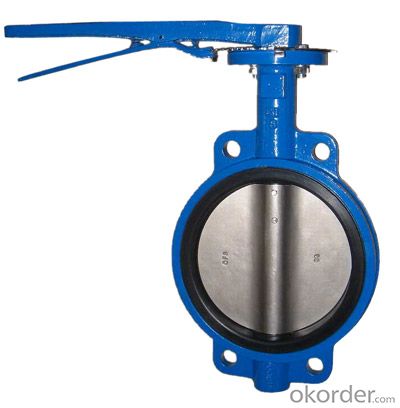
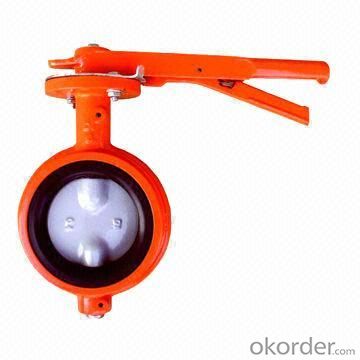
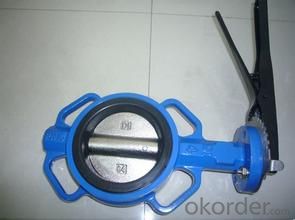
4.Manual Wafer Butterfly Valve Specification:
1)Size: DN40-DN1400
2)Material:body-CI/DI/WCB/SS
disc:DI/CF8/CF8M/C95400
3)Professional Maufacturer for more than 10 years
PRESENTATION:
1) Sizes:
DN40mm-DN300mm
2) Materials:
a) Body: CI(cast iron ,GG25 )/ DI (ductile iron ,GGG40)
b) Disc: DI / CF8 / CF8M / C95400
c) Seat: EPDM / NBR / TEFLON / VITON
5.FAQ
1. What is manual wafer butterfly valve?
Wafer style is the more common of the two and is less expensive than the lug style. The wafer style butterfly valve is just about the standard. It ís so common that no one even bothers to use the word "wafer" when ordering a butterfly valve. It is taken for granted that if a butterfly valve is ordered, a wafer style will be received.
2. How about the Installation of the Wafer Style Butterfly Valve?
Butterfly valves are installed by inserting the valve between two flanges using bolts or studs and nuts to hold it all together. This type of installation, of course, makes it impossible to disconnect just one side of the piping system from the valve. That benefit is received using the lug style valve.
3. What is the working principle of manual wafer butterfly valve?
A butterfly valve is from a family of valves called quarter-turn valves. In operation, the valve is fully open or closed when the disc is rotated a quarter turn. The "butterfly" is a metal disc mounted on a rod. When the valve is closed, the disc is turned so that it completely blocks off the passageway. When the valve is fully open, the disc is rotated a quarter turn so that it allows an almost unrestricted passage of the fluid. The valve may also be opened incrementally to throttle flow.
- Q: What is the difference between turbine butterfly valve and flanged butterfly valve?
- Their models are different, the structure is different, they are the main driving part, different worm gear and straight rod distinguish, all belong to the flange valve.
- Q: Okay, so I've been thinking about trying to learn how to play my dad's baritone bugle, but I have no idea how to. If anyone had a good fingering chart for it, that would be great. The bugle has one valve and a trigger. I am a natural flute player and percussionist, so this is my first time playing a brass instrument. Needless to say I am very confused. Call me a noob, I don't care, as long as you get me a fingering chart for a 1 valve baritone bugle. Please help. :)
- Baritone Bugle
- Q: How do i use a valve spring compressor. It looks like a c-clamp, so don't tell me how to use a smaller one, but the bigger one.Thanks
- the forked end of it will go over the spring part and the solid will work on the valve ,you can only use this one if the head is off though,the smaller ones work good if the head is still on the car,the c-clamps style though is the best one to use its safer and wont allow the springs to fly off,good luck.
- Q: What do D71, D371 and D341 represent in butterfly valves?
- D71 is a handle to clip butterfly valveD371 is a turbine to clip butterfly valveD341 is a manually operated double flanged butterfly valve
- Q: I have a 1993 Oldsmobile Cutlass Supreme and I think I have the case of the blow-by. The engine had high mileage, but was rebuilt b/c it stalled while driving. 3.1L V6 gasoline engine. The fuel filter and the fuel pump are brand new. Now we have the same problem a few months later. It stalls while driving. Its been sitting a while and won't start by itself, so I pulled off the air intake hose off of the air filter to spray starting fluid into it. I noticed oil puddled in the air intake hose, so I looked for the PCV valve on the rocker cover. There is a tube going from the air-intake hose to the rocker cover. I popped out the tube from the rocker cover and there is no PCV valve. Just tube. Is that where the PCV valve is supposed to go? If not, where can I find it on the engine? And could that possibly fix the blow-by and the stalling engine? I'd appreciate any help. Thanks in advance.
- top of the manifold
- Q: What does the triplex of pneumatic butterfly valve mean?
- Generally referred to as "triple parts" as if: filter pressure reducing valve, solenoid valve, with the valve position feedback switch..
- Q: For example, the arrow above is from left to right, and the direction of my current is from right to left. Is that ok? I have a diameter of 700 of the hard seal butterfly valve is so installed, but it will leak water, it will not leak, very serious
- The direction of the arrow on the valve body is cast, refers to the flow of media, users see the arrow, the arrow direction according to the logical and installation, this installation has become a habit, it is easy to accept the installation instructions, according to the national standard is not what error. But in the eccentric butterfly valve is installed so that sometimes there will be some problems, said the following example: according to the flow of eccentric butterfly valve with the medium flow consistent installation, tube medium is liquid, after the valve is closed, if the original direction of medium inlet pressure, reduced or zero, the export of medium reflux reflux, if senior supply, resulting in the high pressure medium, the pressure is greater than the inlet pressure, the valve will be subjected to reverse pressure, because the hard seal butterfly valve as a one-way valve so that the use is not conducive to sealing butterfly valve, and there will be leakage.
- Q: Butterfly valve, two-way pressure and one-way pressure what is the difference?
- The positive pressure and the reverse pressure, the pressure when the medium returns
- Q: DN80 flange butterfly valve, DN80 flange butterfly valve DN80, flange butterfly valve DN80 what is the difference?
- Of course there are differences, the general market sales of the DN80 are many flange plate copper rod butterfly valve, quality can not reach the national standard, to use copper rod copper butterfly valve quality is king.
- Q: Who was the first doctor to discover Pulmonary Valve Stenosis? Also, who was the first doctor to perform surgery for it? Please and thank you for your help.P.S. I have this condition.
- 1761 - Pulmonary valvar or valvular stenosis is one of the more common forms of congenital heart malformations and it has been extensively studied since the original description of pulmonary valve stenosis by John Baptist Morgagni in 1761. 1888 - Tetralogy of Fallot, first characterized by Dr.Etienne Fallot in 1888, is present in about 3000 children born each year in the United States. It is a combination of four heart abnormalities. Dodrill and his colleagues employed it with success for the open correction of a stenotic pulmonary valve in October 1952.
Send your message to us
Butterfly Valve Manual Wafer Vlave PN10-16
- Loading Port:
- China main port
- Payment Terms:
- TT OR LC
- Min Order Qty:
- 100 pc
- Supply Capability:
- 1000 pc/month
OKorder Service Pledge
OKorder Financial Service
Similar products
Hot products
Hot Searches
Related keywords
